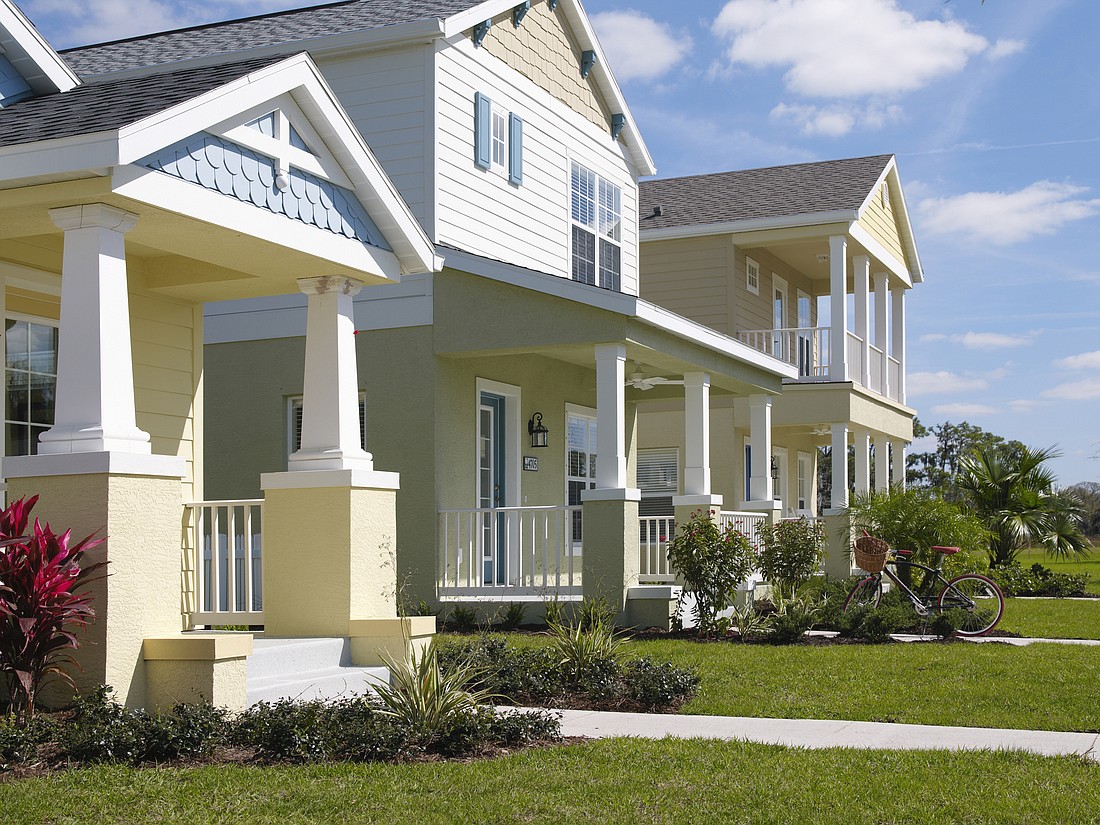- December 13, 2025
-
-
Loading

Loading

Building affordable housing in Sarasota might be compared to “building affordable housing on Fifth Avenue.”
I am hoping I can explain some of the challenges of building affordable housing in Sarasota County and then provide some ideas as to how to meet that challenge to ensure affordable and attainable homes, especially for young families, and young families seeking careers here.
Above all, Sarasota County is one of the most desirable places to be, young or old, in the United States. Just two weeks ago I noticed a car carrier and six cars from California being unloaded at University Park, just north and east of Sarasota. Prior to the last two years, we almost never sold new homes to people repositioning their lives from California (in the 18,000 homes built in Sarasota/Bradenton).
Read more about affordable housing in the region.
What has happened in Sarasota: People, of course, are escaping the challenge and obstacles of other places: taxes, intrusive governments, urban crime, economic lethargy and all rest. They find Sarasota attractive because of its unique quality of life, good educational system, vital economy, low taxes and comparative freedom from governmental influence.
But Sarasota is expensive: First, of course, is the cost of land. Good land costs $50,000-$75,000 per dwelling unit in central Sarasota — more in places like Lakewood Ranch and Palmer Ranch. Impact assessments to pay the capital costs of urban infrastructure range from $14,000-$22,000 per home in Sarasota/Bradenton’s 12 planning jurisdictions.

The additional costs of well-meaning governmental requirements are intrusive, too: $8,000 per home for hurricane uplift standards; $6,000 for energy efficiency; $1,000 for accessibility; $1,500 for additional fire protection while buildings are under construction and all the other obvious governmental restrictions.
Less obvious governmental costs in Sarasota County are the long cycle of development review (from three-seven years for a major project). This adds $10,000 per home for every home in a master planned community.
Environmental reviews and storm water management costs to keep the bay pure add $7,000 per dwelling unit. The 40 days of additional time in building ($4,000 at $100 per day) add an additional $4,000.
Bottom line: The standard for affordable housing (80% of the median annual income in Sarasota County, with 30% of income devoted to housing) computes to $263,000 for a home. Though our team has built 18,000 homes since 1970 — from $18,900 for a home in 1970 — we can no longer build a home at cost to meet the 80% median standard.
In 2021 alone (because of the pandemic and supply disruption) lumber costs have increased 110%, block cost 70% and lumber 70%. Currently, we are having difficulty getting paint, garage doors, garage door springs, lead roof penetration boots, stack collars and truss anchors.
Other opportunities: Home sites in North Port, south Sarasota County, (developed 1959-1972) can still be purchased for $12,000 less in some areas. Even with the installation of well and septic, one can still buy a new home for $160,000 plus land and utilities: say, $270,000.
In addition, we can build very small homes. We can build modular homes. Recently, the City of Sarasota and Sarasota County have made efforts to encourage more human scale and human centric development to allow higher-density urban infill; the use of second homes and garages; and the breakdown of bigger and older homes to smaller dwelling units, with the relaxation of planning standards and some impact assessments. This is a small, but hopeful, direction. (Neal Communities has built smaller homes in some communities, including Forest Creek in northeast Manatee County.)
Connected challenges: The problem with young families and people seeking careers in Sarasota and Manatee counties, is not only housing but jobs and incomes. While we have a successful county economy, based on tourism and hospitality, that does not mean we have the high-scale, high-tech opportunities young people can find in Northern California, or Northern Texas, or the Route 22 corridor in Massachusetts, or even in Palm Beach County, which has a new burgeoning new set of important high-tech and high-finance initiatives.
Above all, Sarasota needs a more welcoming and diverse economy attracting not only jobs in low-tech assembly and process industries, call centers and places for entrepreneurs to retire with their businesses, but also a local government and local economy receptive to greater and higher-income employment opportunities. This has not changed in the 52 years in which I have been building in Sarasota, even though both the opportunities and equality of our education system has vastly improved.
Be realistic: So, what is the solution? First, the solution is to be realistic about what we can achieve. Builders in 2022 cannot build affordable housing in central Sarasota County, one of the most desirable places in the United States. I do think we can seek out greater housing opportunities, higher density, faster governmental processes and more friendly attitudes toward housing.
Local governments can reduce the cost of process disincentives to housing and increase the access to all citizens, particularly the people who most need it: hometown heroes serving our local population, young people, families and people moving to Sarasota seeking a change of life and career here.
A graduate of the Wharton School of Finance at the University of Pennsylvania, Pat Neal is a former Florida legislator and senator. He is the founder and chairman, executive committee, of Lakewood Ranch-based Neal Communities.